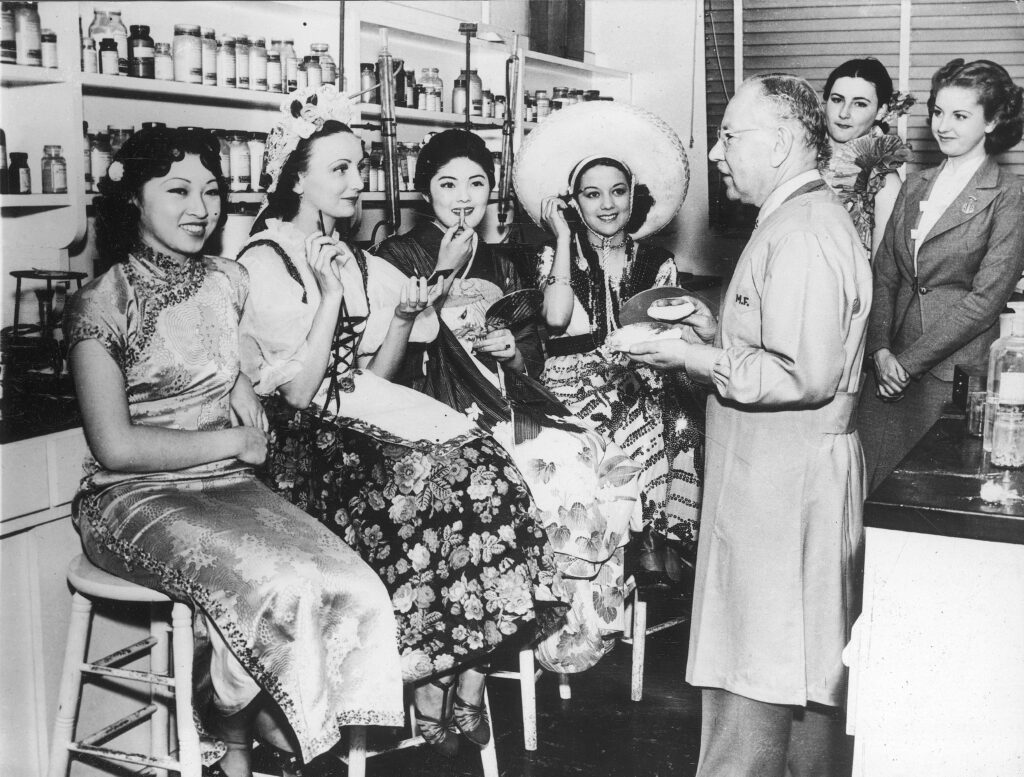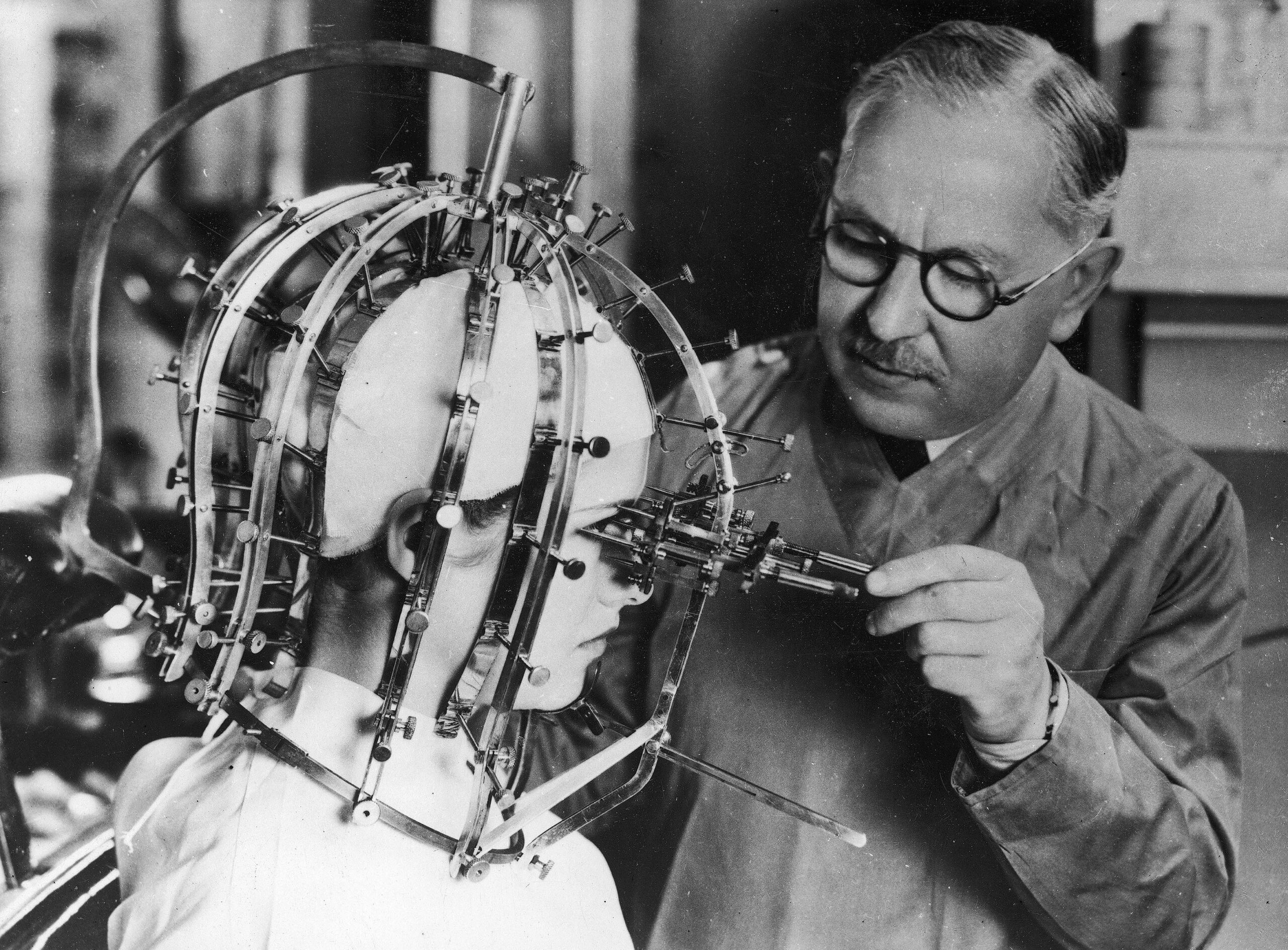MAKSYMILIAN FAKTOROWICZ – MAX FACTOR The Man Who Invented Make-up
Maksymilian Faktorowicz was born on February 18, 1872, in Zduńska Wola near Łódź, into a Polish-Jewish family. He was a cosmetics producer and inventor, the founder of the Max Factor cosmetics brand. He was the one who created the very products that, when combined, became what we now know as women’s make-up. Among his ideas was liquid foundation. He put lipstick in a tube and packaged cosmetics in squeezable tubes. He worked with the stars of early cinema.
It was thanks to him that Rita Hayworth had her trademark red curls, and Boris Karloff his terrifying look in Frankenstein.
At the age of 14, he started his first job as an assistant in a local drugstore, where he learned the secrets of modern skin care and the art of make-up. He constantly experimented with scents and colors. The shop’s owner also made wigs, which particularly inspired the young Faktorowicz.
In 1892, he moved permanently to Moscow, where he opened his own cosmetics and wig shop. Faktorowicz quickly connected with the actors of the Imperial Theater, whom he made up and styled for their roles. Thanks to his enormous talent, soon the entire Moscow aristocracy, including Alexander Romanov and even Nicholas II, were among his clients. This allowed him to save enough money for his dream trip to the United States.
The Street Make-up Artist
Faktorowicz came to America in 1904. He was supposed to only attend the World’s Fair in St. Louis, where he exhibited his cosmetics, but he ended up staying in the US permanently. By 1907, now under the name Max Factor, he moved to Los Angeles, where he opened a cosmetics and wig shop, just as he had in Moscow. Shortly after, he began working in Hollywood as a street make-up artist for actors, who at the time had to pay for their own make-up. His reputation spread quickly, and soon lines of artists were forming at his street stand.
Max Factor watched films and noticed one thing: poorly done make-up. At the time, actors used blunt pomades for lips, and their complexion was masked with hard stick foundation. Poorer actors, who could not afford cosmetics, improvised with products from home—like Vaseline mixed with flour or potato starch blended with lard. In 1914, Max Factor created a modern foundation for actors: easy to apply and remove, providing a natural look without a mask-like effect. The product came in a modern formula and offered as many as 12 shades. He coined the term make-up for his unique approach to cosmetic application.
His invention was a spectacular commercial success. Motivated, Max Factor introduced several more innovations: he put lipstick in a twist-up tube, packaged cosmetics in practical squeezable tubes, created lip gloss, invented false eyelashes and the eyelash curler to accentuate deep, feminine eyes. He also designed a portable vanity case with drawers and a mirror for storing women’s cosmetics. He was the first to use real hair instead of wool in wig production.
Above all, Max Factor taught women how to use these products. He offered beauty lessons to educate women in the art of make-up.

Oscar Time
In 1929, he received an Academy Award, the very first ever granted for make-up. Max Factor transformed the looks of countless Hollywood stars. He dyed Rita Hayworth’s curls red and lightened Jean Harlow’s hair to platinum. Thanks to his lip stencil, Clara Bow’s mouth gained its iconic heart shape. His famous clients included Rudolph Valentino, Charlie Chaplin, Marlene Dietrich, Pola Negri, Frank Sinatra, and John Wayne.
As early as 1930, Max Factor’s company was exporting its products to 80 countries.
Max Factor was also known for applying science to beauty. In 1932, he invented the Beauty Micrometer, a device for measuring the proportions of the face to help select make-up shades for perfect contouring. Three years later, he introduced Pan-Cake Make-up, a compact powder applied with a damp sponge that remains a staple in women’s handbags to this day. When actresses started taking Pan-Cake home to use daily, Max Factor made it available for retail sale.
Personal Life
Max Factor’s personal life was complicated, marked by multiple marriages and battles over custody of his children. He was married three times. His first wife, Esther Rosa Smoler (Lizzie), died suddenly of a brain hemorrhage. His second marriage to Huma “Helen” Sradkowska ended in a bitter custody battle, which he ultimately won. His third marriage to Jennie Cook was the most lasting. He had several children: Fred, Cecilia, Davis, Francis “Frank” (later Max Factor Jr.), and Louis.
The combination of great public success and a turbulent private life paints a deeper human story. Despite his fame and influence, Faktorowicz remained vulnerable to personal tragedy and hardship. His ability to form close bonds with Hollywood stars as a “confidant,” despite language barriers, suggests a powerful nonverbal charisma, empathy, and deep understanding of human psychology and image—all likely as important to his success as his technical innovations.
He died in his sleep on August 30, 1938, in his home in Beverly Hills.

The Brand
Today, the company he founded is
a global cosmetics brand. Max Factor has his own star on the Hollywood Walk of Fame. He introduced the principle of color harmony in make-up—a term still widely used today. Shades were selected to highlight feminine beauty: natural-looking skin, eyes, and hair color.
Maksymilian Faktorowicz, the man behind the legendary Max Factor brand, was much more than a cosmetics manufacturer. He was a visionary who, guided by scientific curiosity, artistic flair, and a profound understanding of human aspirations, transformed the very concept of beauty. From revolutionizing film make-up to democratizing glamour for every woman, his innovations laid the foundation for the modern cosmetics industry. His life story—marked by humble beginnings, personal challenges, and extraordinary achievements—remains a lasting testimony to the power of innovation, resilience, and the belief that “glamour is created.” His legacy continues to shape how we perceive and interact with beauty today, making him
a true cultural icon.







